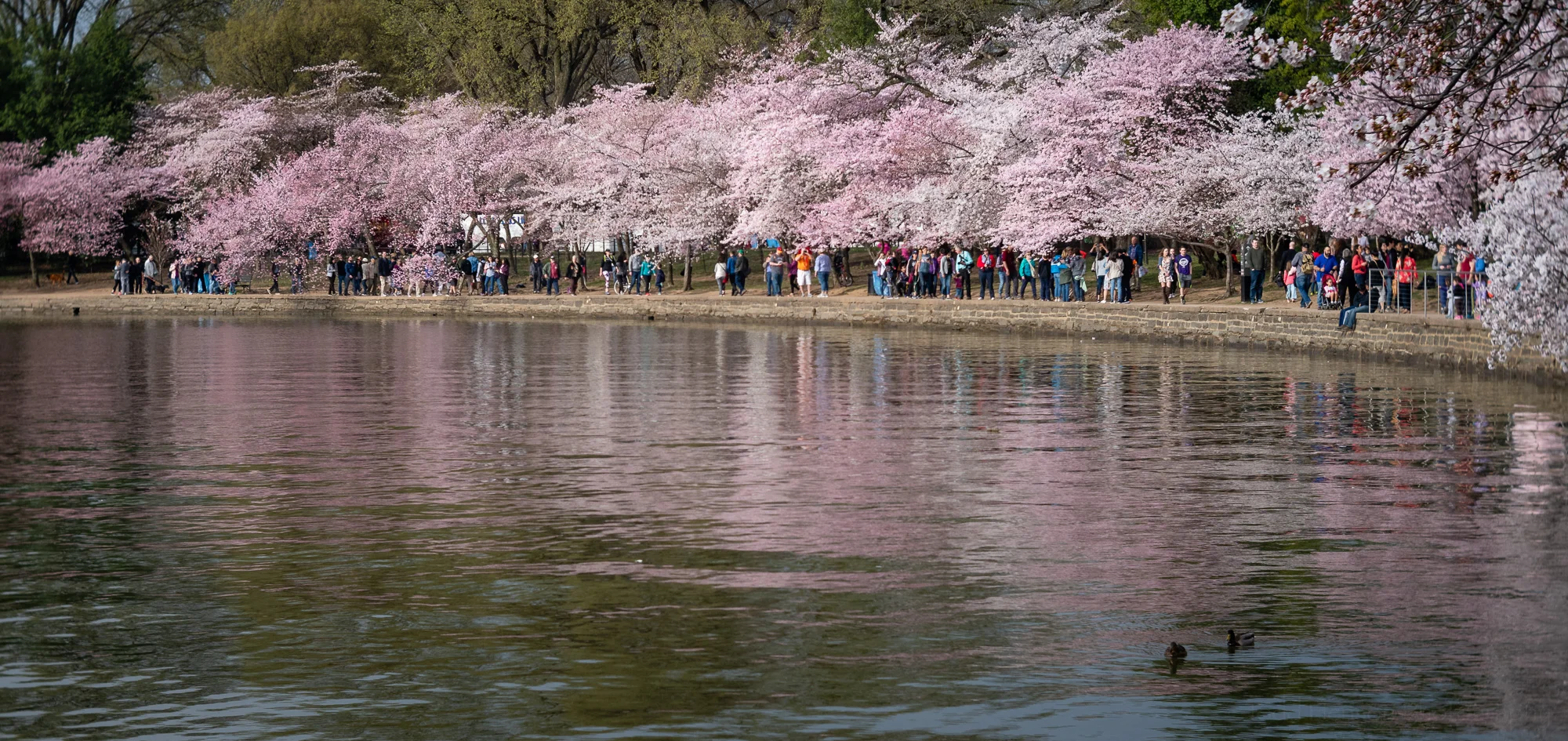Washington, DC Cherry Blossom Crowds along the Tidal Basin
Early each spring large crowds of people travel into Washington, DC hoping to see the cherry blossoms framing the Tidal Basin and scattered in many other areas around the capital. Some years and certain days of the week or times of day are more crowded than others, but if it’s cherry blossom season it’s a good bet there will be crowds of some size anytime you visit.
This year (2019) my brother and I visited DC on Saturday, March 30th, with peak bloom predicted to be April 1st. We took the first Metro into town, which arrived sometime around 8 am. This isn’t early from many a photographer’s perspective, but it is early as far as most folks are concerned. You will still find crowds at that time, but they will be smaller than those around noontime.
Washington Monument Cherry Blossom Crowds
The photos in this post give an example of how the crowds might look at different locations around the Tidal Basin. It was a clear day with no rain forecast, so there was nothing to keep people away, except perhaps for the Kite Festival on the Mall. I heard the crowds on the following weekend (April 6-7) were larger than those we saw.
This year there were several sections of grass that were fenced in, keeping people to the paved path around the Tidal Basin. I assume this was to let the grass regrow in these areas, as it can get rather trampled with all the foot traffic. Other areas were open, letting people wander under the trees.
Some of the monuments, such as the Martin Luther King, Jr. Memorial, have large open areas where people can gather. The FDR Memorial doesn’t have as many large open spaces but has lots of small to medium spaces.
Martin Luther King, Jr Memorial Cherry Blossom Crowds
Tidal Basin Inlet Bridge Cherry Blossom Crowds
It was nearing noon when we made it to the Jefferson Memorial, a favorite of the crowds. Its large extended steps are perfect places to sit and rest for a bit, watching the paddle boats out on the Tidal Basin. But the inside also draws large crowds. I’m not one for crowds, but these places are well worth visiting if you never have.
Cherry Blossom Crowds on the steps of the Jefferson Memorial
Cherry Blossom Crowds inside the Jefferson Memorial
Looking out at the Cherry Blossom crowds from the Jefferson Memorial
Jefferson Memorial Cherry Blossom Crowds
When leaving town just after noon it takes far more time to walk from the Tidal Basin back to a Metro stop than it does to walk from the stop to the Tidal Basin earlier in the morning. You’re stuck walking the speed of the general crowds, which always bunch up around crosswalks. I really feel for those crossing guards, having to manage so many people and vehicles all vying for the same space.
Cherry Blossom crowds while leaving Washington, DC
I hope this post has given you a realistic look at the crowds you might expect if heading into Washington, DC on a cherry blossom weekend. It may be more or less crowded when you arrive, but you should certainly expect some crowds. So give yourself time, bring along some water and a snack, and have patience. You’ll run into people of all sorts, but overall I’ve always found the majority of the crowds to be pleasant and polite. They’re typically there for the same reasons you are. So head into DC and enjoy your stay.
Do you enjoy these posts?
Sign up to receive periodic emails with updates and thoughts. Don’t worry, I won’t spam you. And please consider purchasing artwork or products from my online store, and using my affiliate links in the sidebar to the right when shopping online.
I appreciate your support!













